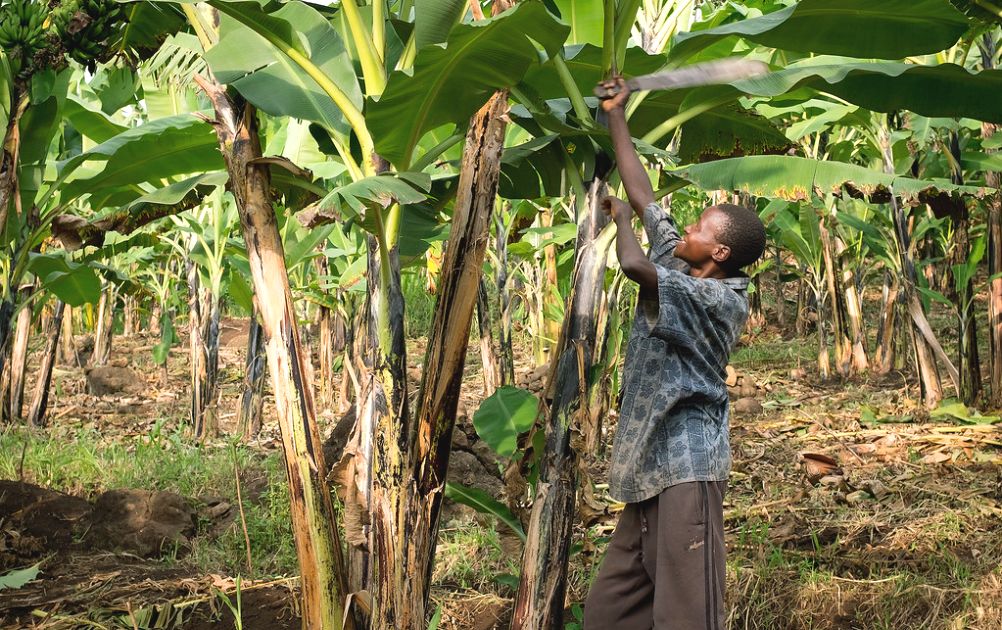
Countries are increasingly examining the potential of carbon markets to close the significant gap in climate finance in Africa. In February, the Chatham House Africa Programme hosted a webinar to discuss the practical implications of carbon markets for countries and the private sector, and what needs to happen on the ground, including capacity building to ensure Paris Agreement compatibility. Increased climate finance is critical for African countries to be able to deliver NDC commitments and enhance sustainable development.
On behalf of UNDP and the UN-REDD Programme, I participated in this webinar alongside Professor Josef Malassi from the Democratic Republic of the Congo, Perumal Arumugan from UNFCCC, and Andrea Bonzanni from IETA.
Professor Malassi stated at the outset DRC’s commitment to participating actively in climate change mitigation through its 155 million hectares of forests and peatlands. Sharing the experiences of the pilot ERA Congo REDD+ project, he emphasized the importance of the involvement of the communities who are the guardians of the forest, especially their role in sustainable agriculture, fishing, and livestock activities that have been introduced to relieve deforestation pressure on the landscape. Payments for the emission reductions achieved through the project (avg. 3.5 million tons CO2/year) support health, education, and social programs that are co-created with locally hired employees and have improved the well-being of thousands of residents.
Carbon markets present an important opportunity to for DRC to advance this model that provides benefits to the community and creates alternatives for the population, changing the relationship between people and forests. Professor Malassi emphasized the vastness of DRC’s forests and the huge potential of carbon markets to channel benefits to the country and its communities, while enabling other countries and, in fact, the world to meet their climate change mitigation goals.
To realize this potential, the price of carbon is key: It must be high enough to justify the opportunity cost of forgoing livelihoods that are damaging to the forest.
From the International Emissions Trading Association (IETA), Andrea Bonzanni confirmed that interest in carbon markets is an all-time high. To illustrate that there has never been so much interest and enthusiasm, he shared that IETA’s membership has increased from 120 corporate members at the beginning of 2020 to more than 300 now. This interest is moving beyond the traditional actors in the sector – specialized project developers and oil and gas and utility industry -- to the whole of the economy, across all sectors. Everyone, he said, is looking at carbon markets to mitigate the carbon emissions associated with their activities.
The potential presented by carbon markets for Africa is vast and the view is often that Africa has to catch up; but with the Africa Carbon Market Initiative launched at COP 27, IETA sees Africa as a frontrunner with the estimated potential to reduce emissions by 300 million tons a year by 2030 and 1.5 billion tons per year by 2050, through carbon markets, resulting in revenues to Africa at a scale of up to $100 billion per year. In addition to the example shared by Professor Malassi, he shared the good example from Ghana and its first transaction selling mitigation outcomes under Article 6 to Switzerland and of South Africa’s compliant carbon pricing regime, which integrates the use of a carbon tax with the Voluntary Carbon Market, enabling the development of emissions reduction projects that can be used to offset the carbon tax.
Sharing experiences from UNDP and the UN-REDD Programme’s fifteen years of providing technical assistance to forested developing countries to conserve and restore forests as a climate solution, I spoke about the core benefits and sustainable development objectives that can be achieved through carbon markets.
To date, 54 African countries have signed up to the Paris Agreement, having articulated their mitigation commitments through their Nationally Determined Contributions.
The numbers associated with these NDCs are big: USD 1.2 trillion to achieve commitments up to 2030. To reach this level of finance, Africa Development Bank estimates that a large portion will come from the private sector.
Implementation of the NDCs requires climate finance which, taking the example of the forest sector, is not available at anywhere near an adequate level. This is where carbon markets come into the picture, with the potential to channel private sector finance to country mitigation efforts under the UNFCCC Article 6 framework. This is an opportunity that almost every country we work with wants to engage in. It is a constant theme of interest and discussion.
Working from the climate and forests perspective, UNDP and the UN-REDD partners have wealth of experience supporting countries to meet the REDD+ readiness requirements: setting up their REDD+ strategies, safeguard information systems, monitoring systems, and forest reference levels. It is this kind of systematic approach to data, transparency, capacity and strategy that is needed for countries to engage effectively and with high integrity in carbon markets. As wells as the recognition that these systems take significant time to embed in institutions, and that there is a diversity of pathways by which countries can put these systems in place. Ghana’s Carbon Markets Office is an inspiring example of how a country can establish a centralized approach to address the multitude of aspects associated with carbon market engagement and offers an important opportunity for countries to learn from each other, as is taking place between Ghana and Kenya and Uganda.
Perumal Arumugan spoke to the economic and production growth potential of the continent and the opportunity for carbon markets to support low carbon growth as African countries leapfrog to a climate friendly development model. To tap into the potential of carbon markets, he set out parameters that will help ensure confidence in carbon markets; confidence that is equally key for countries to feel confident investing in emissions reductions projects and for investors to maintain demand for emissions reductions credits at the right price. What is needed he said, is a SIFT: a system that guarantees supplementarity (reduction first, then trading), integrity (including accurate baselines, additionality, reductions or removals, and robust reporting), fungibility (consistency of standards and no price differentials for credits of the same quality) and transparency (no double counting).
This was an illuminating and engaging event, in which I very much enjoyed participating, with rich presentations too nuanced to capture fully in blog form. To view the event in its entirety, and to hear from the speakers directly, visit the recording here.

